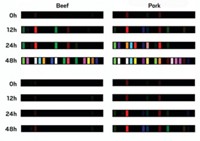Advertisement
Grab your lab coat. Let's get started
Welcome!
Welcome!
Create an account below to get 6 C&EN articles per month, receive newsletters and more - all free.
It seems this is your first time logging in online. Please enter the following information to continue.
As an ACS member you automatically get access to this site. All we need is few more details to create your reading experience.
Not you? Sign in with a different account.
Not you? Sign in with a different account.
ERROR 1
ERROR 1
ERROR 2
ERROR 2
ERROR 2
ERROR 2
ERROR 2
Password and Confirm password must match.
If you have an ACS member number, please enter it here so we can link this account to your membership. (optional)
ERROR 2
ACS values your privacy. By submitting your information, you are gaining access to C&EN and subscribing to our weekly newsletter. We use the information you provide to make your reading experience better, and we will never sell your data to third party members.
Analytical Chemistry
Gold Nanoparticles Help Scientists Detect Growth-Promoting Drugs
Food Safety: New assay could detect illegal β agonists in livestock
by Laura Cassiday
September 1, 2011

Most countries have banned the use of growth-promoting drugs known as β agonists in animal feeds. When livestock consume the drugs, people who eat the animals can experience heart palpitations, headaches, nausea, and other symptoms. Now researchers have developed a quick and easy color-changing assay to detect β agonists in liquid samples (Anal. Chem., DOI: 10.1021/ac200769f). Regulators could use the test to screen animals’ blood and urine for illegal β agonists before slaughter, the researchers say.
Currently, scientists screen for β agonists such as clenbuterol with mass spectrometry. But mass spectrometry can spot only known drugs, says Zhen Li, a biologist at China Agricultural University. Li wanted to find a method that could also detect new β agonists.
Previous studies had shown that certain molecules such as dopamine can directly reduce HAuCl4 to atomic gold, forming gold nanoparticles. Because, like dopamine, β agonists have electron-rich aromatic groups, Li’s team reasoned that the drugs might also reduce gold salts.
So they mixed 13 common β agonists with HAuCl4 . Within minutes, the liquid samples changed color from colorless to red. The color change signaled the presence of gold nanoparticles, which absorb light at 528 nm, making the solutions appear red. Transmission electron microscopy confirmed the formation of gold nanoparticles that were between 15 and 25 nm in diameter.
The scientists then used ultraviolet-visible spectroscopy to measure the concentration of β agonists based on the absorbance of the resulting gold nanoparticles. The detection limit varied with the drug, but the scientists could always detect β agonist concentrations in the low to sub-micromolar range. They also tested the assay in the presence of antibiotics and glucose, molecules sometimes capable of reducing gold salts, and found that those compounds didn’t disrupt the measurements.
Li next plans to adapt the assay to test animal fluids.




Join the conversation
Contact the reporter
Submit a Letter to the Editor for publication
Engage with us on Twitter